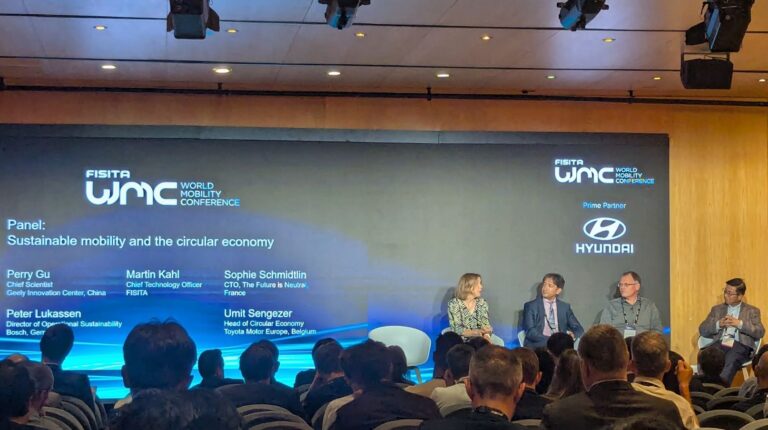Earlier this year, FISITA’s annual conference brought together global engineering players to share insight into the technologies shaping the future of vehicle development. As part of the strategic partnership between FISITA and Automotive Testing Expo, ATTI revisits key themes from the event and looks ahead to FISITA’s participation in a panel discussion at Automotive Testing Expo North America in Novi, Michigan, later this month, where those conversations will continue live on the show floor
FISITA’s World Mobility Conference (WMC) 2025 was held at the Palau de Congressos de Catalunya on June 3-5, delivering insight, strategy and technical discussions. Co-located with EuroBrake, it covered the future of technology in mobility, industry disruption, sustainability, regulations, trust, public acceptance and human factors. CEOs from Hyundai Motor Company, VinFast and Chery contributed keynote addresses, while technical sessions focused on model-based system engineering; AI and automation in product development; innovations in vehicle simulation and durability testing, and more.
During The Future of Automotive Testing Conference on October 22 at this year’s Automotive Testing Expo North America (October 21-23), FISITA’s North America ambassador, Scott Craig, will lead a panel discussion titled, Driving validation: The nexus of physical testing, digital twins and global data in the age of SDVs and electrification.
Conference highlights
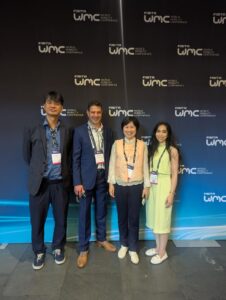
Jose Manuel Barrios, FISITA executive board member, STA president and head of innovation at Applus Idiada, gave the opening address on a new mobility era marked by electrification, digitalization and automated driving capabilities through connected solutions: “We must balance tradition with innovation, developing holistic intelligence, digital and sustainable solutions, prioritizing user experience and data driven services.”
He emphasized cross-border collaboration to address shared environmental challenges and broader access to technologically advanced products in short vehicle development timelines. He was joined by Xavier Roca Ramon, general director for industry at the government of Catalonia, who said, “The next few years will be decisive for the future of Europe’s industry. Sustainability challenges are an opportunity for energy and electronics manufacturers to enter the automotive sector, and for local companies to supply this new value chain. We should engage with Chinese and Korean companies as we have with American and Japanese. In an unpredictable economic climate, Catalonia offers stability by hosting key players in development, validation and integration of EV components and battery production.”
The plenary session featured Hyundai Motor Company’s president and CEO, José Munoz, who gave the principal speaker presentation on the future of mobility. Like other OEMs, Hyundai is aiming to be carbon neutral by 2045.
Mehdi Ferhan, Volvo Group’s senior vice president – powertrain engineering, participated in a panel discussion titled Managing change: OEMs and the evolution of mobility. In an on-site interview, Ferhan said that a change of mindset is needed within the company when it comes to simulation: “We are working on improving simulation confidence levels in our engineering population, taking advantage of data acquisition and knowledge. Data is the new oil. Thanks to connectivity solutions, we have the capacity with compute power and AI to better perform validation on long test profiles.”
He wouldn’t comment on the swift development cycles from Chinese OEMs, but said, “It’s great to see similarities and differences in product life cycle approaches at WMC. The commitment to sustainability and electrification are very similar.”
And when asked about the area of development and testing he feels most pressure, he said, “In my core powertrain expertise, there is pressure on pollutants and CO₂. Most tests we perform are to be compliant and ensure the organization lowers carbon emissions.”
Jin Shang, assistant president of Chery Auto and CEO and CTO of Kaiyang Laboratory, also presented a keynote on the safety and security of artificial intelligence in AI+ vehicles, including AI safety in models, training, data privacy, regulations and ethics. He encouraged building an in-depth defense system and enhancing quantum-resistant capabilities in cybersecurity, but said the big challenge is cost.
Read ATTI‘s interview with Ferhan at Volvo Group.
Technical sessions
Within the Digitalisation and AI – model-based system engineering session, Steve Miller, a consultant who has worked for Amazon and GM, presented large language solutions for automotive SW quality improvements. He demonstrated that a two-stage prompt engineering approach can deliver high-quality code refactoring results that speed up workflows by many hours, and discussed how this could advance the field with improvements in CLI-based agentic coding.
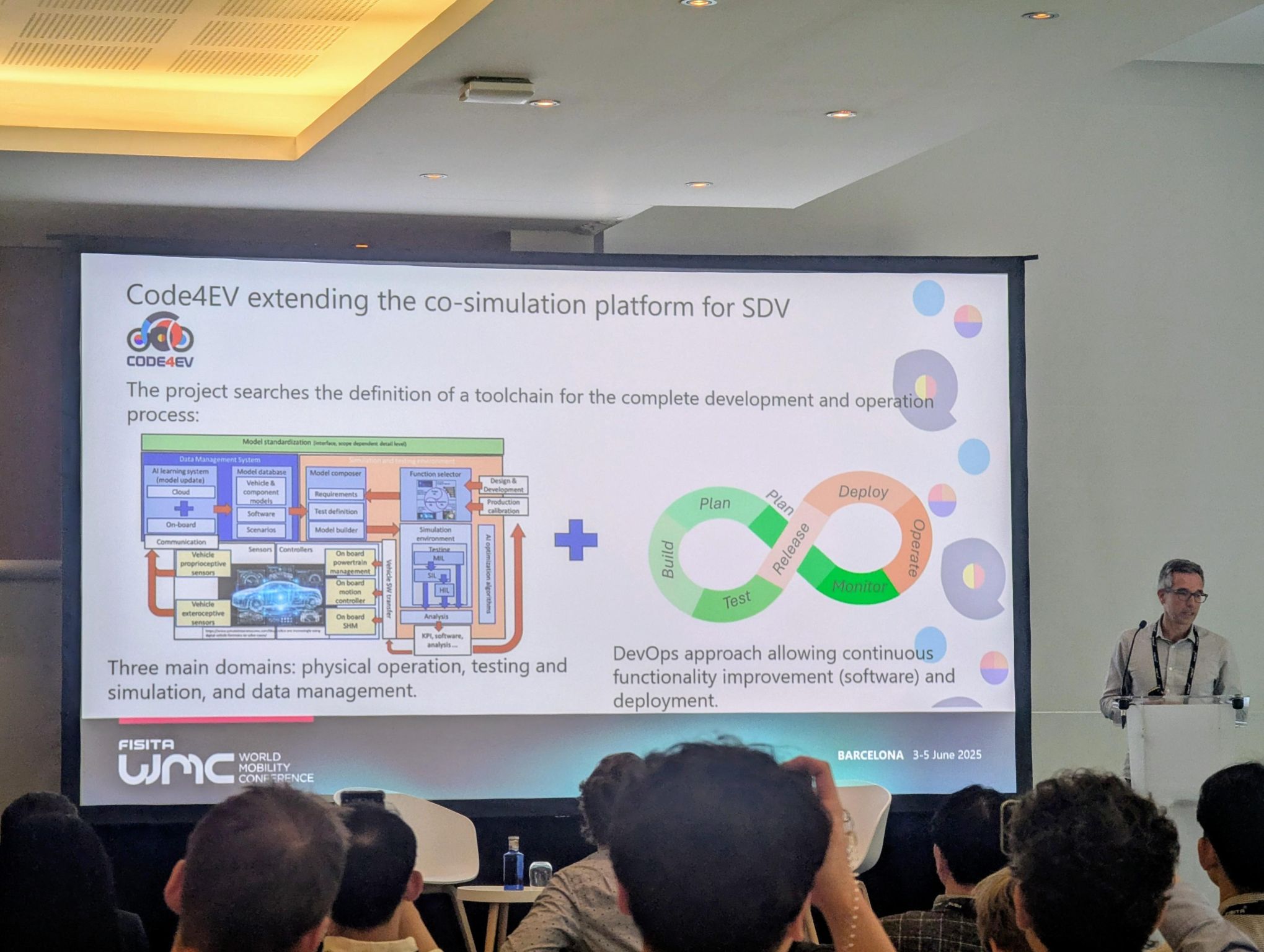 There was also a presentation from Jose-Manuel Rodriguez-Fortun, R&D engineer at the Aragon Institute of Technology, on the XILforEV project for distributed co-simulation for designing electric vehicles and its future use for software-defined vehicles in the framework of the Code4EV project. Results were evaluated on three use cases: data-driven EV optimization, EV health monitoring and predictive maintenance, and smart motion control. Rodriguez-Fortun said the project seeks to define a toolchain for complete development and operation process and that a DevOps approach enables continuous functionality improvement (software) and deployment.
There was also a presentation from Jose-Manuel Rodriguez-Fortun, R&D engineer at the Aragon Institute of Technology, on the XILforEV project for distributed co-simulation for designing electric vehicles and its future use for software-defined vehicles in the framework of the Code4EV project. Results were evaluated on three use cases: data-driven EV optimization, EV health monitoring and predictive maintenance, and smart motion control. Rodriguez-Fortun said the project seeks to define a toolchain for complete development and operation process and that a DevOps approach enables continuous functionality improvement (software) and deployment.
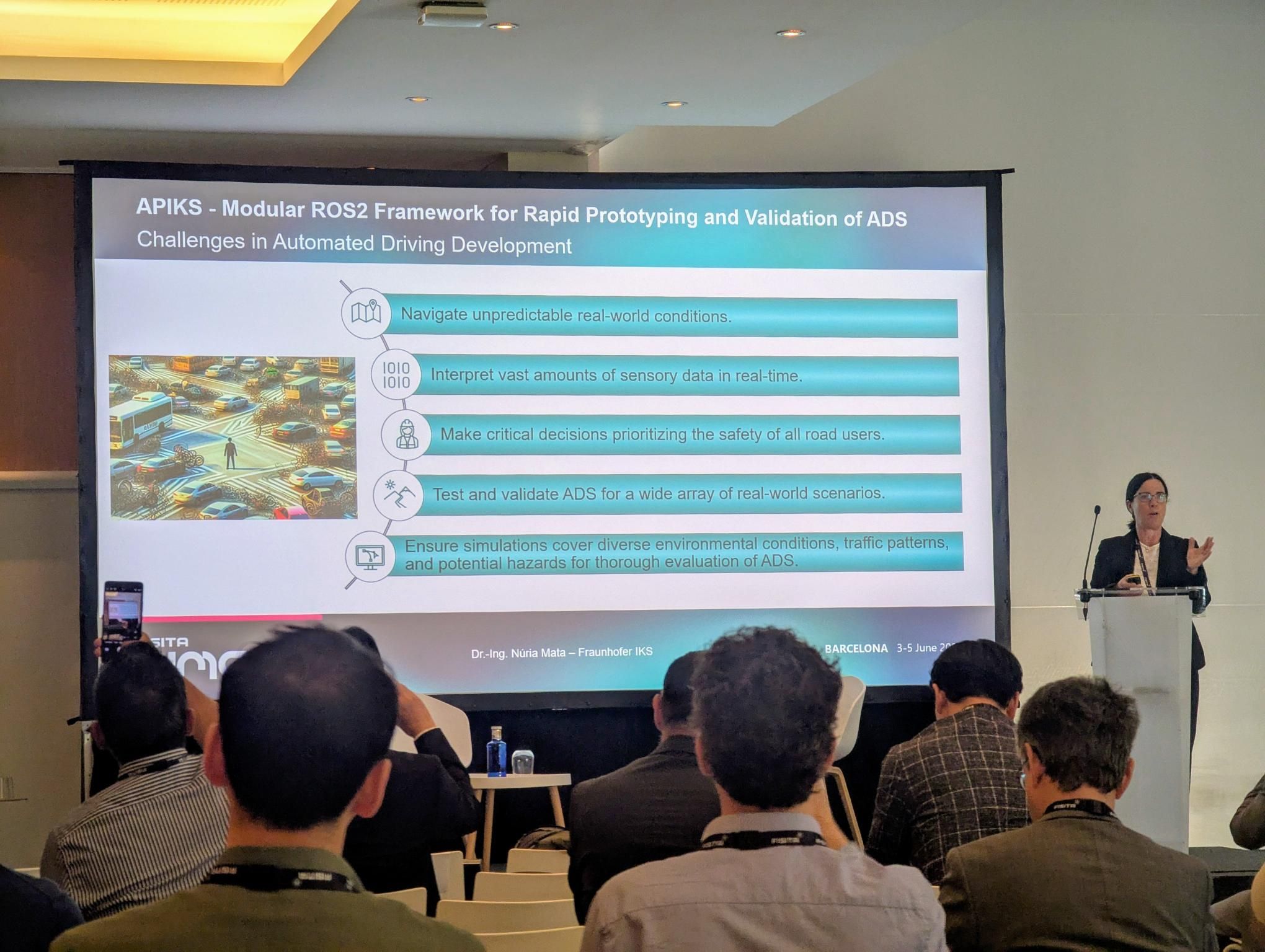 In the Artificial intelligence and automation in product development session, Dr Núria Mata, head of department at Fraunhofer IKS, presented APIKS – a modular framework for rapid prototyping and validation of automated driving systems. Integrated with the CARLA (Car Learning to Act) simulator, APIKS offers a simplified framework for small-scale vehicle integration of AD functions. Bridging academia and industry and focusing on pre-development, Fraunhofer can create corner cases and provide proof-of-concept results using heuristics and machine learning.
In the Artificial intelligence and automation in product development session, Dr Núria Mata, head of department at Fraunhofer IKS, presented APIKS – a modular framework for rapid prototyping and validation of automated driving systems. Integrated with the CARLA (Car Learning to Act) simulator, APIKS offers a simplified framework for small-scale vehicle integration of AD functions. Bridging academia and industry and focusing on pre-development, Fraunhofer can create corner cases and provide proof-of-concept results using heuristics and machine learning.
On automated driving development challenges, Dr Mata said ML relies on data and is often unpredictable: “Algorithms and systems need to be developed to predict real-world conditions, interpret vast amounts of data and ensure simulation covers diverse environmental conditions.”
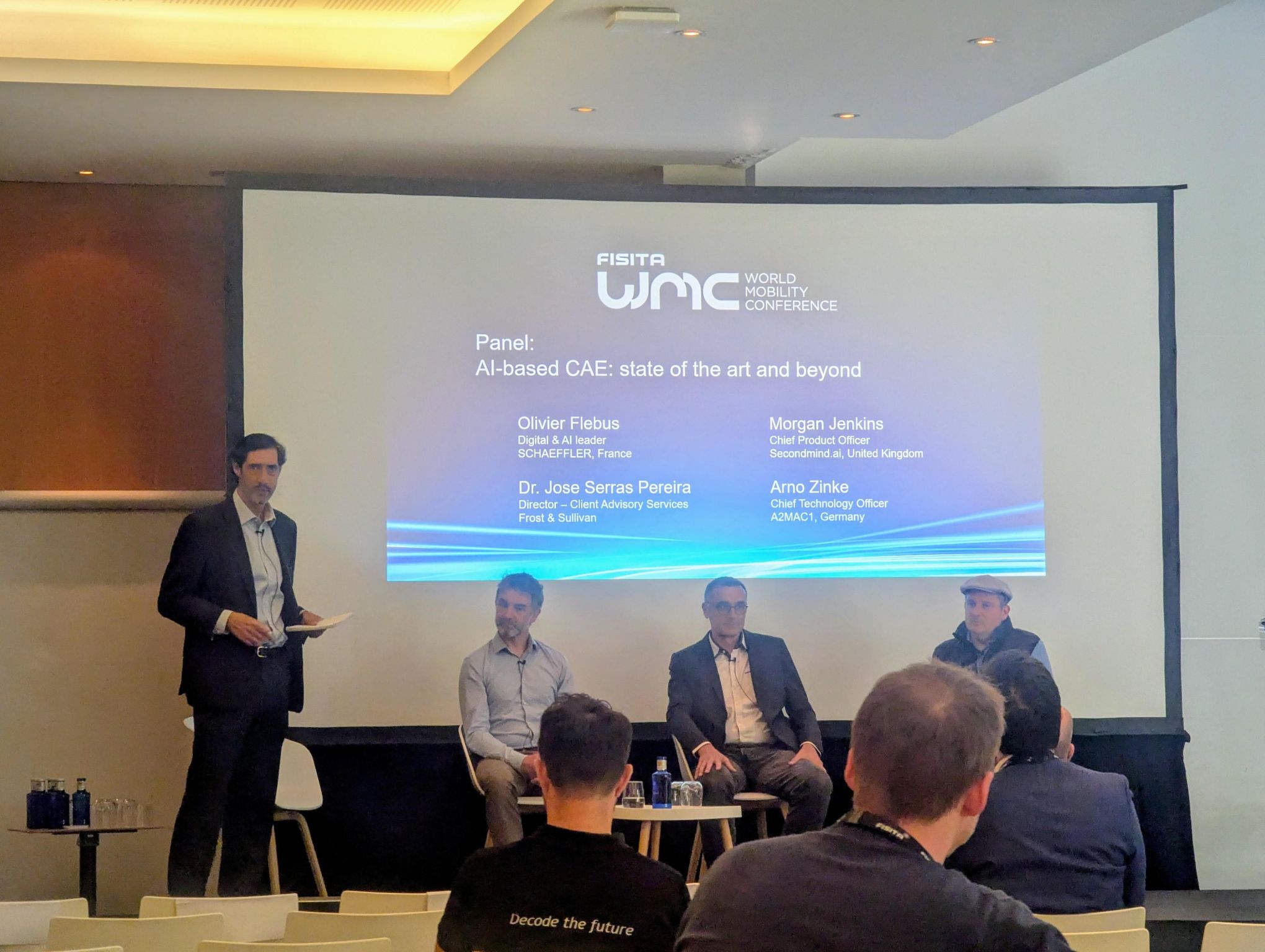 A keynote session on the role of AI in CAE featured a panel discussion in which moderator Dr Jose Serras-Pereira, mobility advisory director at Frost & Sullivan, emphasized the need to demystify AI for engineers. Morgan Jenkins, chief product officer at Secondmind.ai, echoed this, stating, “It’s just another software tool – in CAE, AI can be ML and optimization. Engineers are inquisitive but held to account, so they need to trust the tools. Proof of concepts are great, but the real test comes in deployment. It’s about repeatability and trust.”
A keynote session on the role of AI in CAE featured a panel discussion in which moderator Dr Jose Serras-Pereira, mobility advisory director at Frost & Sullivan, emphasized the need to demystify AI for engineers. Morgan Jenkins, chief product officer at Secondmind.ai, echoed this, stating, “It’s just another software tool – in CAE, AI can be ML and optimization. Engineers are inquisitive but held to account, so they need to trust the tools. Proof of concepts are great, but the real test comes in deployment. It’s about repeatability and trust.”
Exhibition highlights
The V4Safety project presented demonstrations on the effective use of simulation. Sytze Kalisvaart, StreetWise project manager at TNO, said, “Many simulation claims focus selectively on positive outcomes, but things can still go wrong. The main challenge for the industry is that regulatory bodies often don’t know how to critically assess simulation results. OEMs address these limitations through extensive real-world testing, yet they remain eager to accelerate their development cycles by improving virtual testing. It’s about more than marketing how realistic a simulation looks – high-quality rendering is most valuable, for example, when assessing safety and camera perception. You can’t compare data you don’t understand, so we help organizations choose the right simulation provider for their specific needs.”
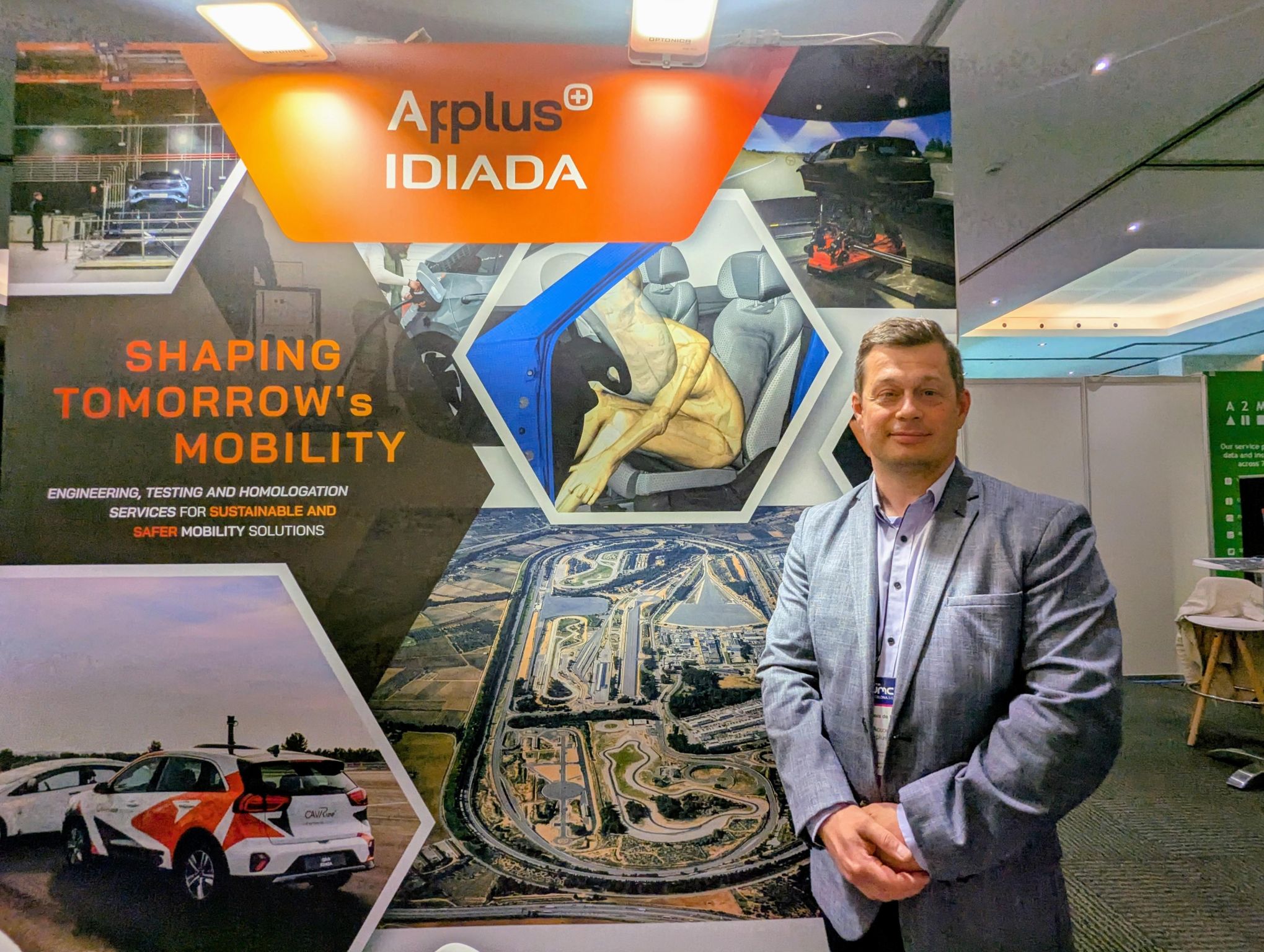 Applus Idiada also presented its new Iris system, an AI-based automotive regulatory knowledge database for certifying products for different markets. Monthly regulatory monitoring reports give companies more time to update a product to fulfil new requirements. By receiving these updates before new regulations take effect, companies gain extra lead time to make necessary changes or improvements to their products.
Applus Idiada also presented its new Iris system, an AI-based automotive regulatory knowledge database for certifying products for different markets. Monthly regulatory monitoring reports give companies more time to update a product to fulfil new requirements. By receiving these updates before new regulations take effect, companies gain extra lead time to make necessary changes or improvements to their products.
Hear from FISITA’s Craig at 2:45pm at The Future of Automotive Testing Conference in Novi, Michigan, on October 22.
Visit the Automotive Testing Expo North America website to find out more about this year’s event and to secure your attendance.
Visit the FISITA website to learn more about its work and upcoming events.


